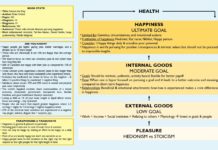A team of University of Waterloo scientists has advanced to the semi-finals of the Deep Space Food Challenge. Their project, “Novel hydrogel photobioreactor for bioregenerative life support,” moved onto phase 2 of judging and now awaits results.
Valerie Ward, assistant professor of Chemical Engineering at UW, has been thinking about how to reduce water consumption and increase sustainability in the algae growth process since her PhD days.
One of the challenges of space travel is transporting and growing food in space. It is expensive and energy intensive to transport food. Growing crops consumes a large amount of water and produces significant waste as the whole plant is usually not edible.
The goal of the UW team was to create a device that reduces water consumption for growing microalgae.
On the team with Ward are associate professor of chemical engineering Nasser Abukhdeir, applied science masters candidate Nick Rasmussen, and co-op student Craig Harrison.
The microalgae they are working with is Chlorella, which was chosen because it is edible rich in protein, and will produce oxygen while consuming CO2 from the crew in space.
Protein production in space is another challenge that the team’s prototype addresses. Guidelines for astronauts say one-third of protein consumed should be plant-based and the remaining two-thirds should be animal-based.
The best moment of the project according to Ward was when the team finally saw algae growing.
The project has been in development for a year, and the team was given $30,000 in phase 1 of the Deep Space Food Challenge to fund the construction of a prototype. The challenge is run in partnership with NASA, the Canadian Space Agency (CSA), and other international collaborators. The challenge is looking for innovative food production technologies for use in space and here on Earth.
“My favorite part is you don’t normally get to develop a new type of bioreactor,” Ward said. “A lot of the technology has been around for a long time and it works really well for most things so you don’t need to design a new reactor. From a chemical engineering point of view, it’s a dream project to design your own reactor that’s a totally different configuration from anything else out there and actually see it built and working.”
The second phase of judging happened last week, with $100,000 on the line. The team will find out the results in February. If selected, they will then move on to phase 3, proceeding with a more comprehensive version of their prototype.
Ward expressed that working on the project has been an interesting exercise in challenging one’s innate assumptions. The technologies used on Earth may not work in space. There are a multitude of factors to consider when building a prototype such as microgravity, the rate at which water evaporates, and surface tension changes. Part of the project is showing these factors have been accounted for.
The long-term plans for the project, outside of the Deep Space Food Challenge, are to further assess the viability of pursuing biofuel development on Earth.
Ward’s message for readers: “I’ve been thinking about this topic for ten years and I’m finally getting to do it. Sometimes you just have to wait till the timing is right, but if you really want to do something you’ll eventually get the chance.”






























